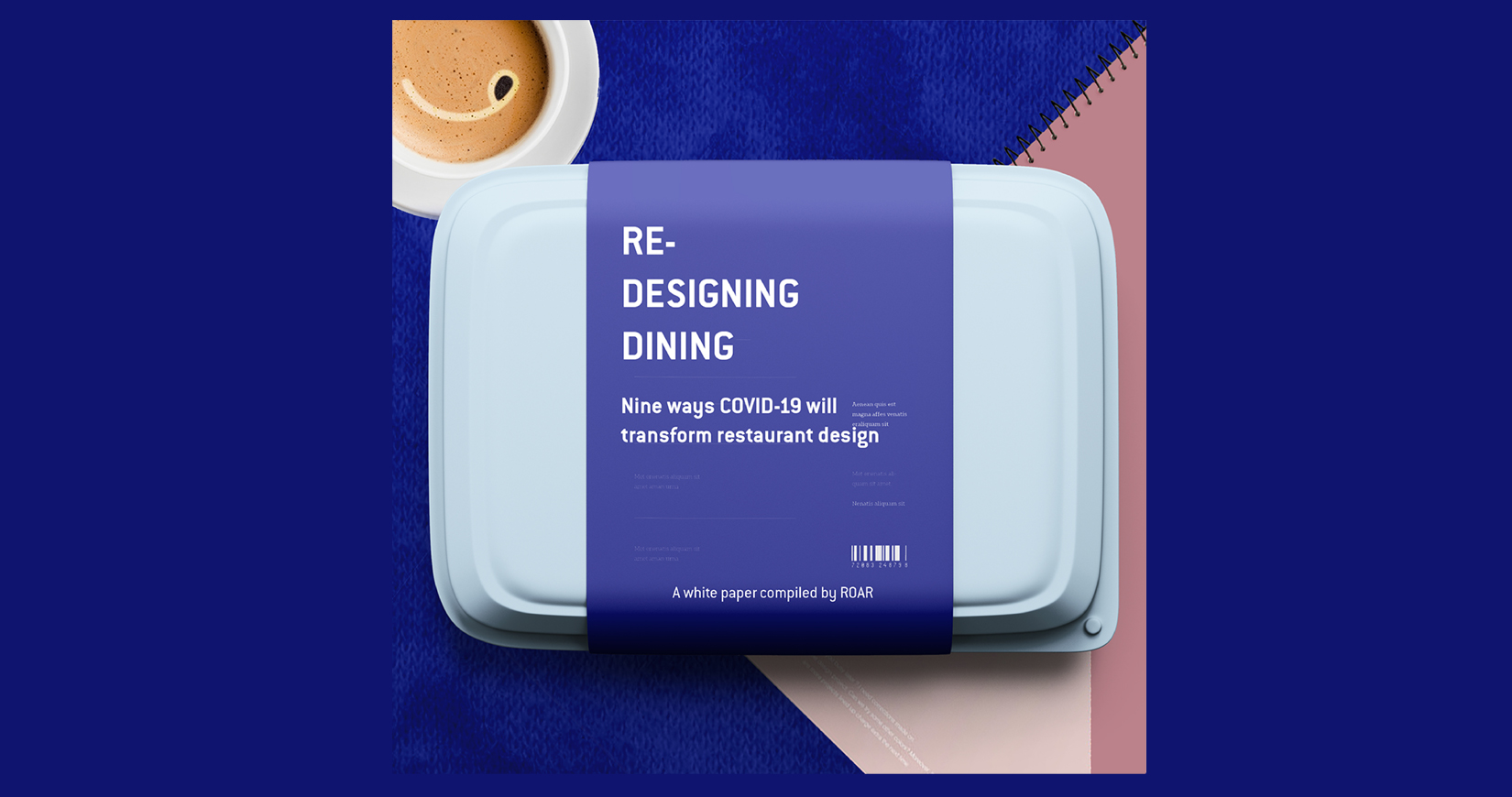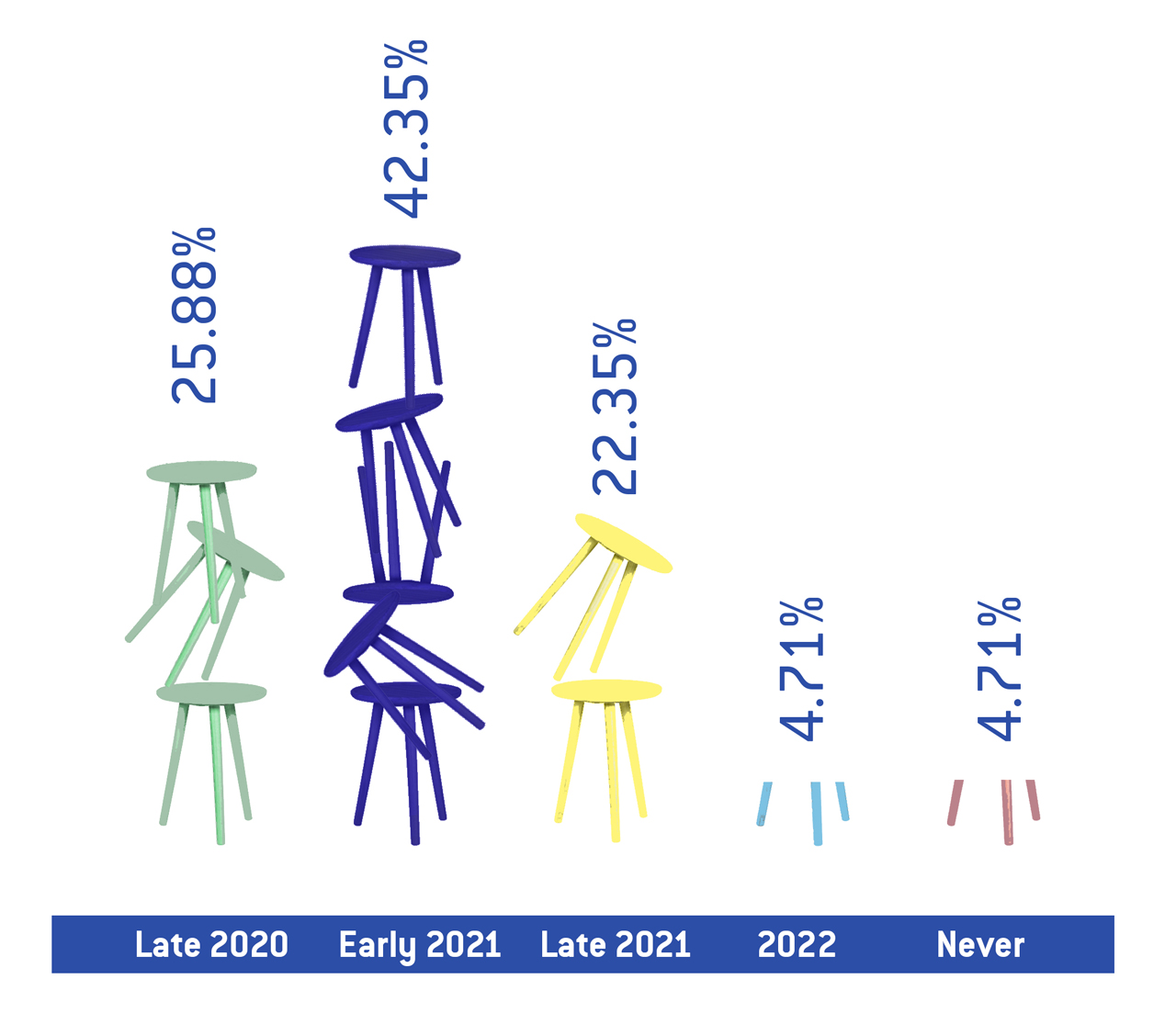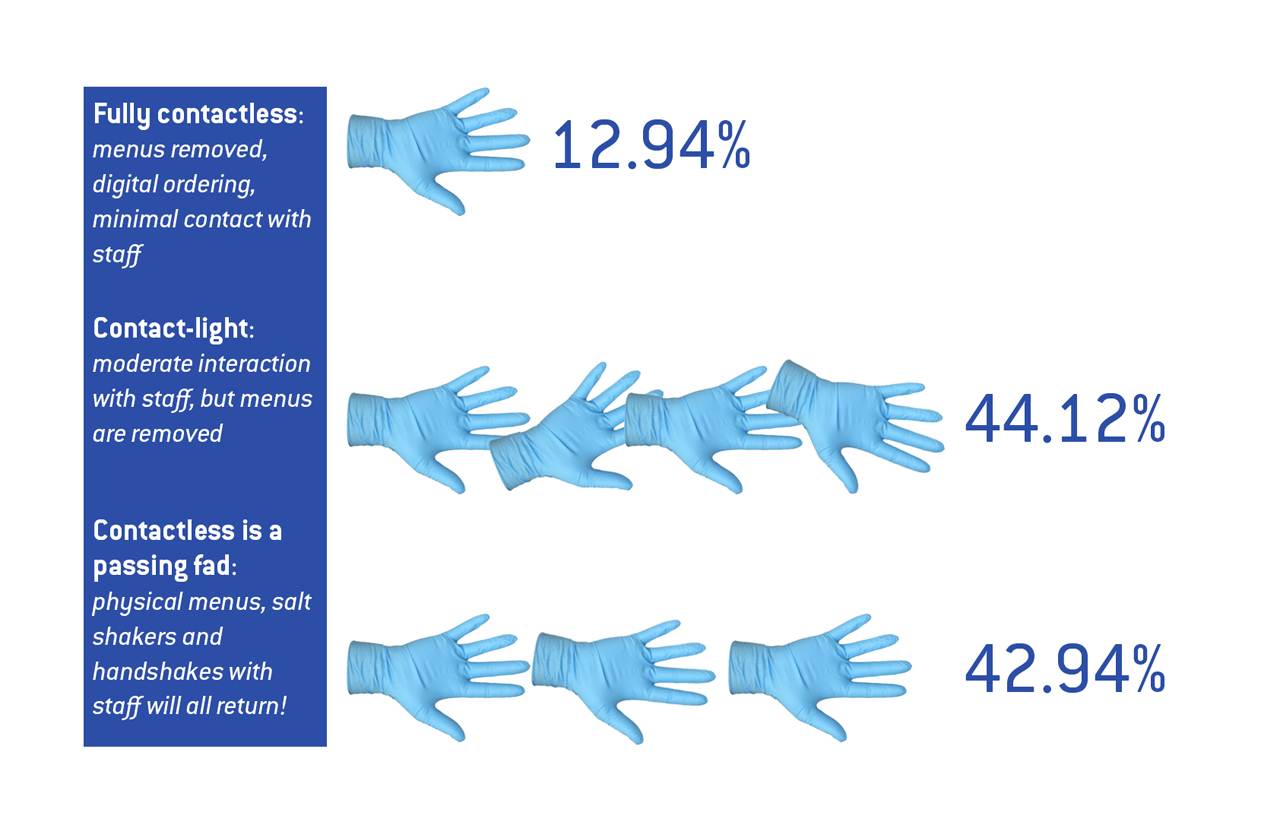Copyright © 2025 Motivate Media Group. All rights reserved.
White Paper by Roar reveals the future of restaurant design post Covid-19
The research reveals what we may expect of the future of dining

A White Paper by Roar reveals results on the future of restaurant design and dining in a post Covid world.
According to the report, restaurant designers will abandon social distancing and return to pre-pandemic spacing – but not until 2021.
A survey of 170 industrial professionals revealed that only a quarter (26%) think a return to normal spacing will happen before the end of this year. Most (64%) expect that to happen next year, while a small minority (5%) say the restaurant trade will never return to normal.

“Safe spacing will be the most dramatic impact on restaurants – but according to our experts, one that is likely to be short-lived,” says Pallavi Dean, founder and creative director of Roar, the company that compiled the White Paper.
The White Paper noted that the guidelines in the IBC (International Building Codes) for F&B specify an average 15 sq ft per seated diner, and 5 sq ft for customers standing in so-called ‘vertical drinking’. Current World Health Organisation guidelines call for 27 sq ft per diner in F&B outlets.
‘Layout & spacing’ was the first of the Big 3 issues highlighted in the White Paper. The next two were ‘contactless’ and ‘buffet/sharing food concepts’.
“Very few people expect dining to be fully contactless. far more likely is what we’re calling ‘contact-light’,” Dean explained.

According to the White Paper, the contactless trend will have multiple impacts –some relating to objects while others to people. Physical menus may become rare, if not extinct. The same may be true of communal salt & pepper shakers, and the grubby three-week-old bottle of ketchup in the middle of the table. Sharing mezze with close family members will likely endure – but sharing platters at a large corporate functions may not.
The prosaic, administrative and functional aspects of the restaurant experience must also be reimagined, says the White Paper. Restrooms in particularly must be completely re-planned, with every unnecessary touchpoint removed: doors, soap, water and drying etc.
However, people are a different matter. “Since the dawn of restaurants, a charismatic maitre d’, waiter, chef, barman or patron has been the lifeblood of a good restaurant – nowhere more than in the Middle East, where I grew up,“ Dean said.
The White Paper concluded that this physical familiarity will ultimately endure, though maybe not before a vaccine for COVID-19.
You can read the full White Paper here.
The Latest
Textures That Transform
Aura Living’s AW24 collection showcases the elegance of contrast and harmony
Form Meets Function
Laufen prioritises design, functionality and sustainability in its latest collections
Preserving Culture, Inspiring Creativity
Discover the Legacy of a Saudi Art Space: Prince Faisal bin Fahd Arts Hall explores the Hall’s enduring influence on the cultural fabric of Saudi Arabia
Channelling the Dada Spirit
Free-spirited and creative, The Home Hotel in Zurich injects a sense of whimsy into a former paper factory
id Most Wanted- January 2025
Falaj Collection by Aljoud Lootah Design
Things to Covet in January
identity selects warm-toned furniture pieces and objets that align with Pantone’s colour of the year
Shaping the Future of Workspaces by MillerKnoll
Stacy Stewart, Regional Director Middle East & Africa of MillerKnoll discusses the future and evolution of design in workspaces with identity.
Shaping Urban Transformation
Gensler’s Design Forecast Report 2025 identifies the top global design trends that will impact the real estate and built environment this year
Unveiling Attainable Luxury
Kamdar Developments has launched 105 Residences, a new high-end development in Jumeirah Village Circle.
The Muse
Located in the heart of Jumeirah Garden City, formerly known as ‘New Satwa’, The Muse adds to the urban fabric of the area
Cultural Immersion Meets Refined Luxury
The Chedi Hegra opens its doors in AlUla’s UNESCO World Heritage Site
Redefining Coastal Luxury
Sunshine Bay on Al Marjan island combines seaside views, exceptional design, and world-class amenities to create a unique waterfront haven
















